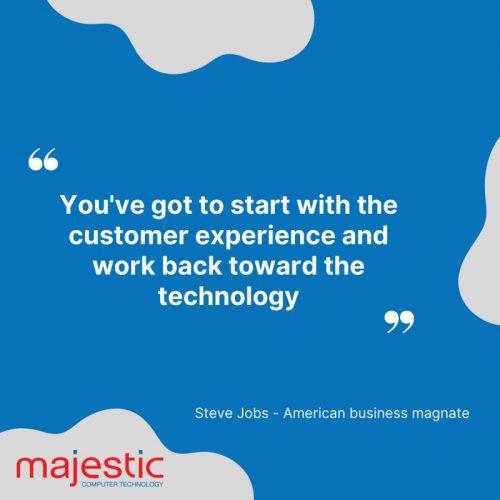Majestic's CEO Tal Evans explains the benifits when an organisation operates at IT best practice level
There are multiple benefits when an organisation operates at the IT best practice level. The organisation sees better client retention as well as more interest from new customers. The reputational and financial benefits that come from this, resulting in great benefits for the organisation over time.
There are some very obvious positives to operating at a best practice level. I’ve previously discussed Majestic’s four quadrants:
- Process
- People
- Customer
- Growth
I’ve spoken a lot about the operational impact of your organisation’s technology environment recently. I’ve touched on the associated staff retention benefits that come with a solid operational strategy because most people are obviously happier to work where everybody knows exactly what’s going on. But operating at that level has an equal, if not greater, amount of impact on client retention strategies – whether you call them members or constituents etc., and no matter what your organisation is about. Because they’re getting far greater value out of their association with, and investment in your organisation.
Because things are happening faster or moving faster, there is far less friction in delivering an outcome, and they are far more inclined to continue to engage and continue to buy or whatever it is that they’re doing with you. That then, in turn, has a significant impact on an organisation’s reputation. We all know that when things are going well, and people share praises, that word of mouth has a significant amount of currency value in promoting growth and ultimately success. If we have happy clients and members, we are far more likely to grow and have more happy clients and members. We can achieve a better outcome as a consequence of that. When we don’t, we potentially end up with reputational damage. It’s far more costly to correct the mistakes associated with that than to prevent it by continuing to invest in organisational maturity underpinned by technology.
Steve’s quote encapsulates the need for an IT strategy in one sentence. Technology is not a solution in and of itself. If not applied strategically, it can no more solve an organisation’s problems than randomly waving around various power tools that could construct a house. Before investing in and implementing an IT solution, the organisation that operates at a best practice level really understands what its expectations of it are.
When was the last time a leader (or anyone for that matter) in you organisation, used the term “Our customers”, or “My customers”? It’s a common turn of phrase, but it’s also potentially false. They may be “Your customers”, but they’re also your competition’s best prospects, especially when you’re not providing what they need. The customer that isn’t getting their needs met will look elsewhere. It’s incumbent on every organisation to ensure that they’re meeting the needs of their clients and stakeholders. And technology is a big part of meeting those needs. Keep up with your competition and meet the demands of your customers by having your organisation practice at the appropriate IT level.
No organisation likes to make major investments without a solid look at the ROI (return on investment) involved. But how many organisations actually understand ROI principles when it comes to technology? Physical or human assets are an easier concept to explain to a board or other stakeholders. We understand that if we put on more salespeople, we can generate more sales. If we move to a bigger building, we can put on more staff. If we pay more rent to be in an energy-efficient building, it may or may not pay off in savings on utilities etc. These are all ROI concepts that are easy to follow, partly because they’ve been around for years.
When it comes to technology ROI, however, it often seems far less clear cut. The difference between one hardware over another, one software over another, cloud vs on-premises solutions, the type and structure of your network – all of these decisions must be made, but calculating their ROI is nowhere near as easy as the earlier examples above.



